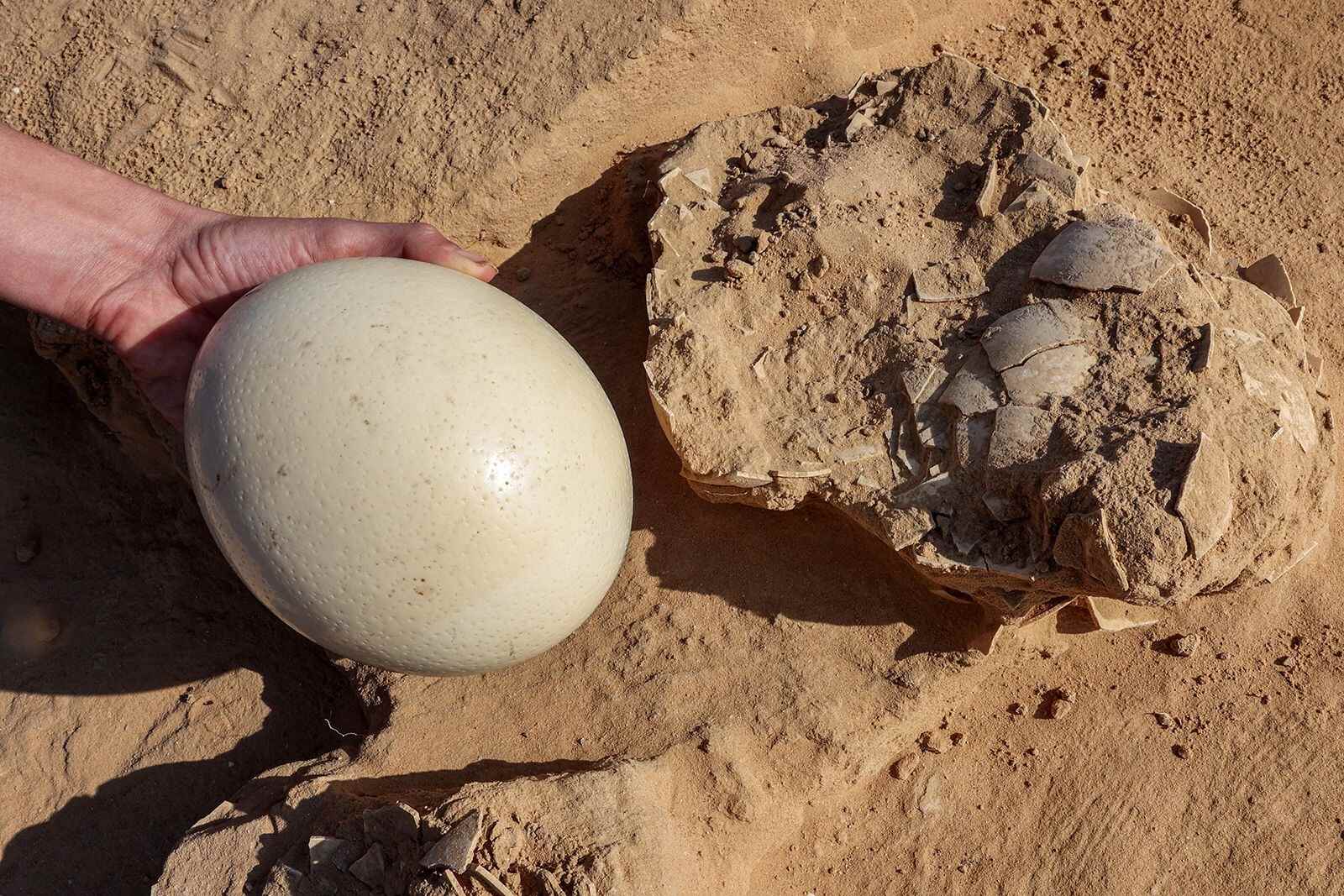
Genyornis eggs hold secrets from a time when giant birds roamed Australia. These eggs, laid by the now-extinct Genyornis newtoni, have fascinated scientists and history buffs alike. Imagine finding an egg that’s over 40,000 years old! Researchers have discovered that these ancient eggshells can tell us about climate change, human interaction, and even the diet of these colossal birds. Did you know that some of these eggs were likely cooked by early humans? This suggests a fascinating link between human activity and the extinction of these giant birds. Intrigued yet? Let’s crack open some amazing facts about Genyornis eggs!
Key Takeaways:
- Genyornis, a giant bird from the past, laid enormous eggs that were hunted by early humans, impacting the prehistoric ecosystem of Australia.
- The study of Genyornis and its eggs provides valuable insights into ancient ecosystems and continues to fascinate researchers and the public today.
What is Genyornis?
Genyornis, an extinct genus of large, flightless birds, roamed Australia during the Pleistocene epoch. These birds were part of the Dromornithidae family, often referred to as "thunder birds" due to their massive size. Let's dive into some fascinating facts about Genyornis eggs.
- Genyornis eggs were enormous, measuring about 1.5 times the size of an ostrich egg.
- These eggs weighed approximately 1.5 kilograms each.
- The eggshells were around 2.5 millimeters thick.
- Genyornis eggs were likely laid in shallow nests on the ground.
- The eggs had a distinctive texture, with a rough, pebbly surface.
The Extinction of Genyornis
The extinction of Genyornis is a topic of much debate among scientists. Various theories suggest different causes, from climate change to human activity.
- Genyornis went extinct around 47,000 years ago.
- Some researchers believe that human hunting contributed to their extinction.
- Evidence suggests that humans may have collected and eaten Genyornis eggs.
- Climate change during the Pleistocene epoch likely affected their habitat.
- The arrival of humans in Australia coincided with the decline of Genyornis.
Discoveries and Research
Discoveries of Genyornis eggshells have provided valuable insights into the bird's life and extinction. These findings have been crucial in understanding the prehistoric ecosystem of Australia.
- The first Genyornis eggshell fragments were discovered in the 1970s.
- These eggshells have been found in various locations across Australia.
- Radiocarbon dating has been used to determine the age of the eggshells.
- Analysis of the eggshells' isotopic composition has provided clues about the bird's diet.
- Burnt eggshell fragments suggest that humans cooked and ate Genyornis eggs.
Physical Characteristics of Genyornis
Genyornis was a formidable bird, with unique physical characteristics that set it apart from other species of its time.
- Genyornis stood about 2 meters tall.
- The bird weighed between 220 and 240 kilograms.
- It had a large, powerful beak, ideal for crushing tough vegetation.
- Genyornis had strong, sturdy legs for walking long distances.
- Despite its size, Genyornis was likely a fast runner.
The Role of Genyornis in the Ecosystem
Genyornis played a significant role in its ecosystem, influencing the environment and other species around it.
- As herbivores, Genyornis helped maintain the balance of plant life.
- Their grazing habits likely shaped the landscape of prehistoric Australia.
- Genyornis eggs provided a food source for early humans and other predators.
- The bird's extinction may have had a ripple effect on the ecosystem.
- Studying Genyornis helps scientists understand the dynamics of extinct ecosystems.
Cultural Significance of Genyornis
Genyornis has left a lasting impact on Australian culture and history, with its legacy still evident today.
- Aboriginal rock art depicts large, flightless birds resembling Genyornis.
- These birds feature in Aboriginal myths and legends.
- Genyornis is sometimes referred to as the "mihirung paringmal" in Aboriginal languages.
- The bird's eggshells are considered valuable archaeological artifacts.
- Genyornis continues to fascinate researchers and the public alike.
Modern Research and Technology
Advancements in technology have allowed scientists to uncover more about Genyornis and its eggs, providing a clearer picture of this ancient bird's life.
- DNA analysis has been attempted on Genyornis eggshells, though with limited success.
- High-resolution imaging techniques have revealed detailed structures of the eggshells.
- Stable isotope analysis has provided insights into the bird's diet and environment.
- Computer modeling has helped reconstruct the bird's appearance and behavior.
- Ongoing research continues to shed light on the mysteries of Genyornis and its eggs.
The Final Word on Genyornis Eggs
Genyornis eggs offer a fascinating glimpse into the past. These ancient eggs, laid by a giant bird that roamed Australia over 40,000 years ago, have provided scientists with valuable insights into prehistoric life. The discovery of burnt eggshells suggests early humans might have cooked and eaten these eggs, shedding light on human-animal interactions during that era.
The extinction of Genyornis remains a topic of debate, with theories ranging from climate change to human hunting. Regardless of the cause, the study of these eggs continues to captivate researchers and history enthusiasts alike.
Understanding Genyornis eggs not only enriches our knowledge of extinct species but also helps us appreciate the intricate web of life that once existed. As we piece together the puzzle of our planet's history, each discovery brings us closer to understanding the complex relationships that have shaped the world we live in today.
Frequently Asked Questions
Was this page helpful?
Our commitment to delivering trustworthy and engaging content is at the heart of what we do. Each fact on our site is contributed by real users like you, bringing a wealth of diverse insights and information. To ensure the highest standards of accuracy and reliability, our dedicated editors meticulously review each submission. This process guarantees that the facts we share are not only fascinating but also credible. Trust in our commitment to quality and authenticity as you explore and learn with us.
